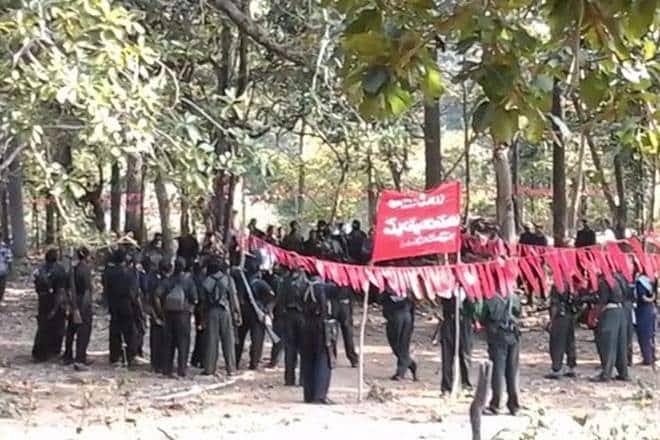Story of Communist Terrorism - Chapter 1
The story is inspired by the real-life Naxalite attack in the Dantewada district in Chhattisgarh state on April 06, 2010, which also resulted in the death of 76 security personnel.

Maoist (Naxlas) in India came into existence in the year 1967 in Naxalbari village in West Bengal with its agenda to usurp the government.
To this day this group remains a threat to the internal security of India with its carefully planned attacks and endeavours.
Lal Salaam, a book by Cabinet Minister (Govt of India) Mrs Smriti Irani tries to bring out some of these crimes through stories and relevance with real-world incidents.
This will be reviewing the analysis of the book to bring forward such details.
The story starts by vividly describing the attack of Maoists on Central Reserve Police Force (CRPF) patrol vehicles in the fictional town of Ambuja in Chhattisgarh which led to the death of 76 CRPF officers.
The story is inspired by the real-life Naxalite attack in the Dantewada district in Chhattisgarh state on April 06, 2010, which also resulted in the death of 76 security personnel.
Just like the town Dantewada, in the book Ambuja is a Maoist hotbed of the Chhattisgarh state.
On 6th April 2010, in the Tademetla forests of Dantewada over 80 CRPF officers and a local police group were performing an area observation in the Bastar tribal region of the Indian state of Chhattisgarh when they were attacked by the Naxalites.
Maoists on the hilltop started an open fire and executed an IED (Improvised Explosive Device) on the forces.
The team of officers, around 120 in number was massively outnumbered by almost 1000 Maoist who attacked, killed and fled with any available resources.
Rescue missions were constrained due to the heavy firing between both sides which meant many injured soldiers were not tended to on time. The attack resulted in the death of 76 soldiers and serious injuries of more than 50.
The 1st chapter of the book describes the attack from the point of view of Darshan, a Deputy Commandant of CRPF in Ambuja.
The CRPF soldiers were performing their last patrol before retiring for the day when their vehicles were bombed. This wrecked the vehicle resulting in injuries of many and instant death to the soldiers who were patrolling close to the vehicle on foot.
The Maoists then emerged from the woods and started firing; not even giving time to the officers to come to terms with the attack.
The road, which was a dirt track with the forest on either side, was barely two vehicles wide, and just like the forest track of Dantewada, it proved to be a huge disadvantage for the CRPF personnel in the ambush.
Darshan starts heading towards the forest carefully, thinking of stopping the attacks from the hillock when he stumbles across a small clearing which looks like a temporary residence of the Maoists where an old man is guarding the clearance with a shotgun overlooking the ambush site.
Upon discovering each other both turn towards their guns for their defence. The old man starts firing and Darshan discovers his gun is jammed so he starts heading towards the man, getting shot in his left arm in the process.
He knocks out the old man in hand-to-hand combat and then tends to his injury. Before Darshan could investigate the clearing further, a frightened young boy still in his teenage comes forward and points an AK-47 at him.
Darshan coaxes the boy into not shooting him and both agree to go their own ways. Just then they hear excited voices of men coming towards them and out of panic the boy fires multiple shots at Darshan.
The last thing Darshan witnesses before dying is a man twirling a machete and whistling while looming over his body.
The story further dwells on bringing justice to Darshan and his fellow officers, discovering the spider web of Naxalites and their higher-up connections, which will be elaborated on in our next review analysis.
Article by
Mansi Dixit
She is a vibrant intern at The Narrative.
A Journalism and Mass Communication graduate, Mansi finds her creative haven in non-fiction.


